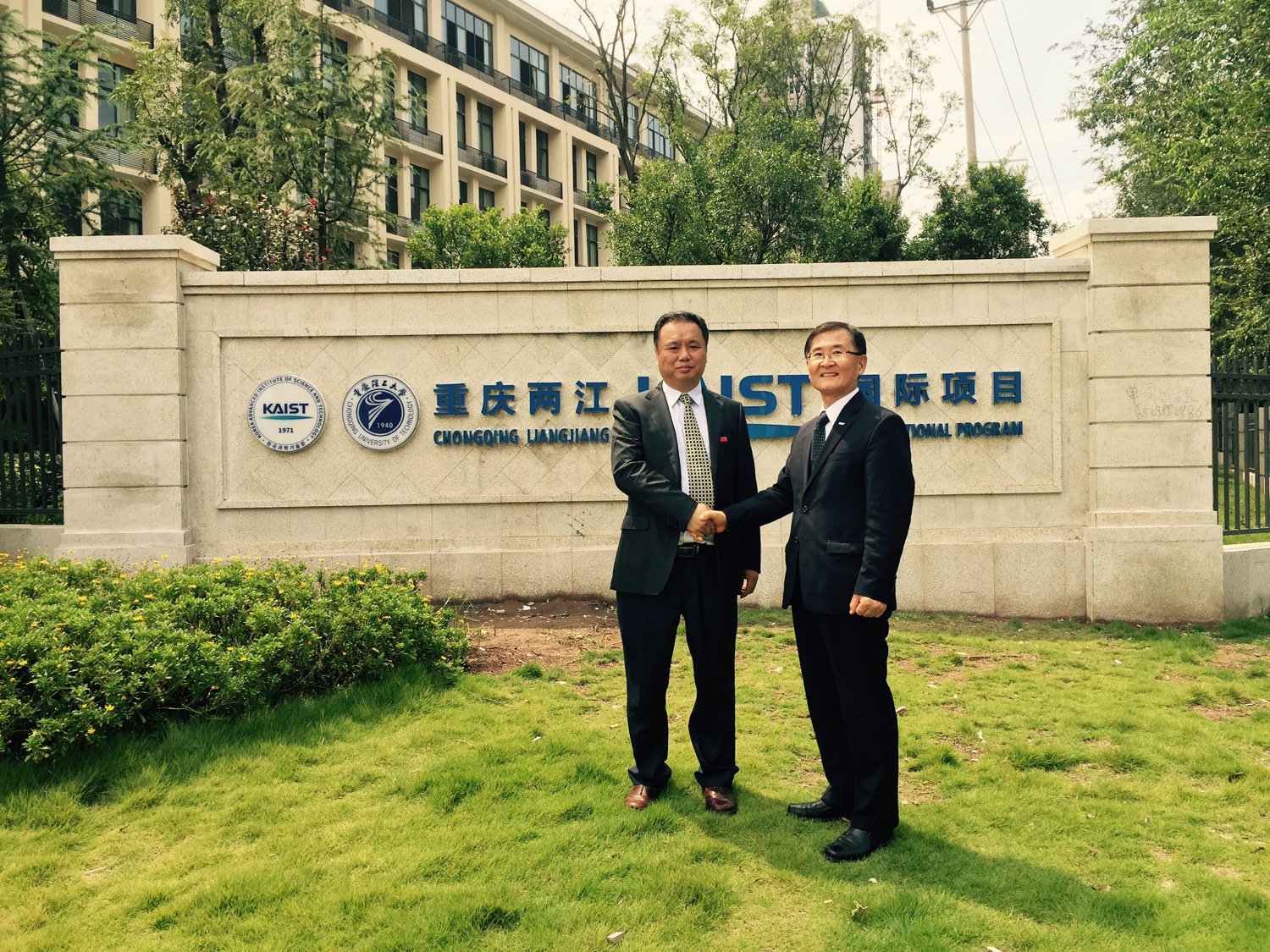KAIST has exported its educational system and curriculum to Chongqing University of Technology, signifying its emergence as a world-renowned institution that stands as a model for other universities.

Chongqing University of Technology, formerly known as Chongqing Institute of Technology, is a public university located in Chongqing, China. Established in 1940, the university now has around 26,000 students and 1,590 teachers, specializing in engineering, economic management, and basic engineering. Its disciplines in automobile manufacturing, drive technology, thermal engine technology, and transmission technology are recognized internationally. According to QS, Chongqing University of Technology now ranks 181st in Asian University Rankings of 2015; KAIST scored 3rd in the same ranking.
In September 14, KAIST and Chongqing University of Technology hosted the KAIST international program entrance ceremony, in which President Sung-Mo Kang of KAIST, President Shi Xiaohui of Chongqing University of Technology, and more than 66 freshmen participated. The KAIST international program was hosted to train electronic and computer engineers. To do so, both universities jointly established a Department of Electricity and Electronic Engineering and a Department of Computer Science at Yangkang Campus of Chongqing University, and accepted the aforementioned 66 freshmen for this semester.
In this program, KAIST directs education and research, while Chongqing University of Technology directs the selection of enrolling students and general administration.Chongqing University’s curriculum will mostly follow KAIST’s programs in the School of Electrical Engineering and the Department of Computer Science. Eight professors from KAIST will lecture in English while 17 professors from Chongqing University of Technology will cover the rest of the classes. Under consent from the Chinese Ministry of Education, both universities will also continue to operate graduate programs as part of a master's course.
Last August, in order to promote the cooperative project between the two schools, KAIST established the KAIST Education Cooperation Center and appointed Professor Young-Nam Han as its director. "This program signifies that the Chinese government and university acknowledged the excellent educational techniques and curriculums of KAIST," said President Sung-Mo Kang. "KAIST will continue to export its educational system."

